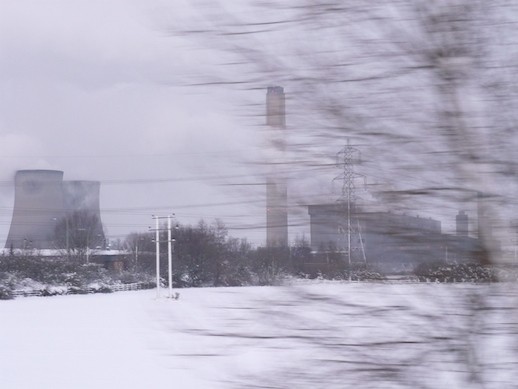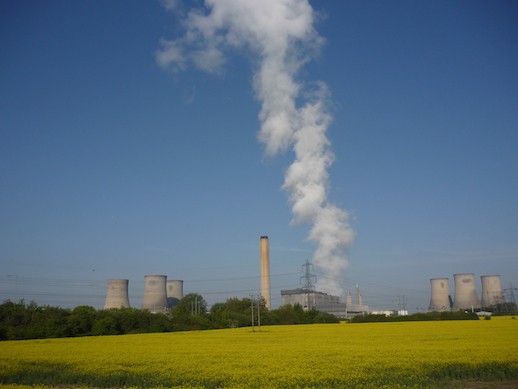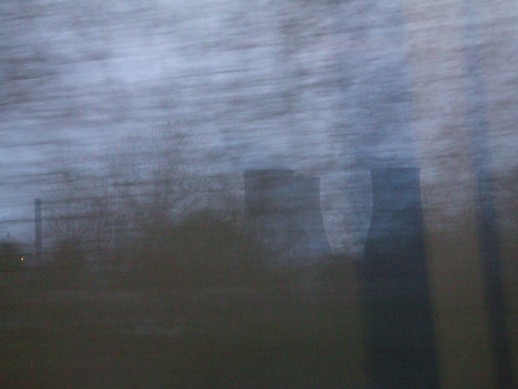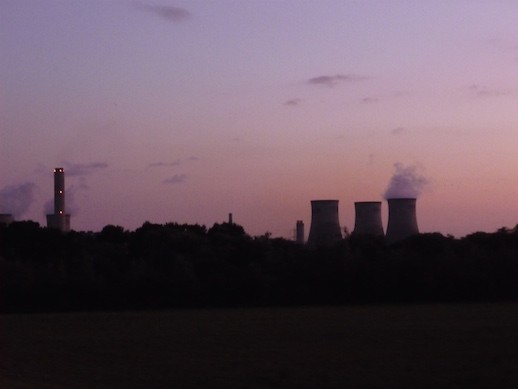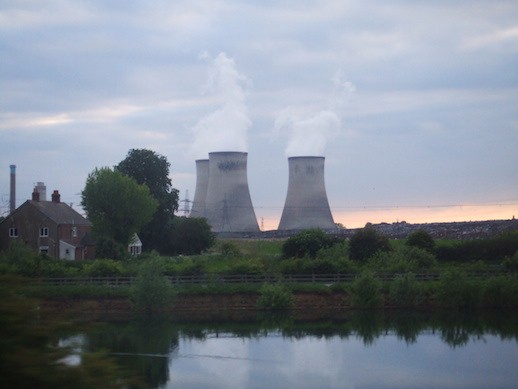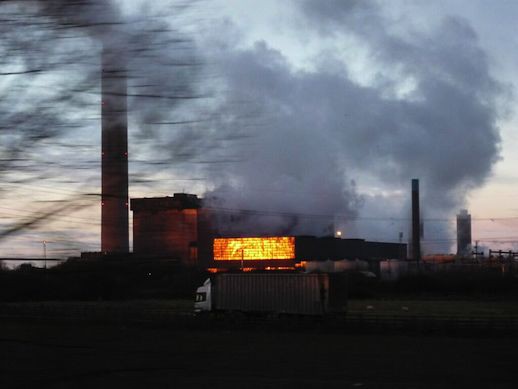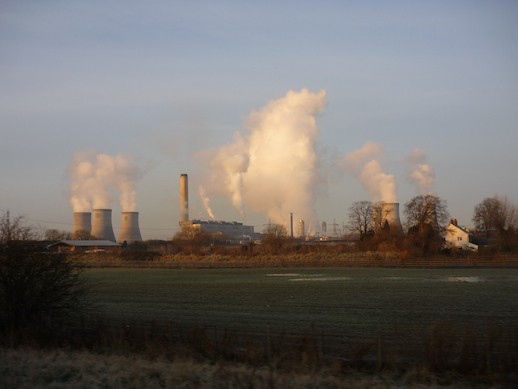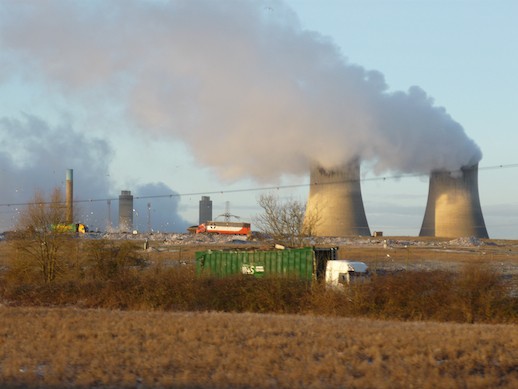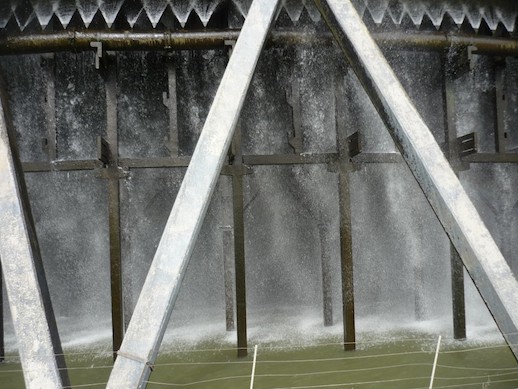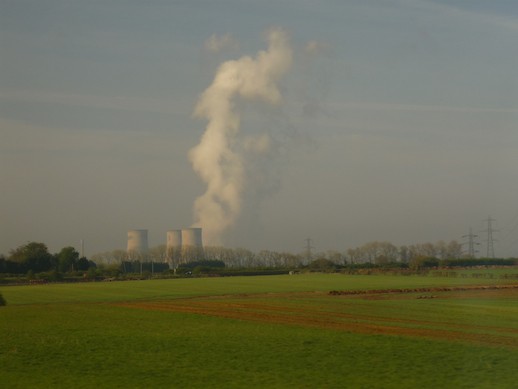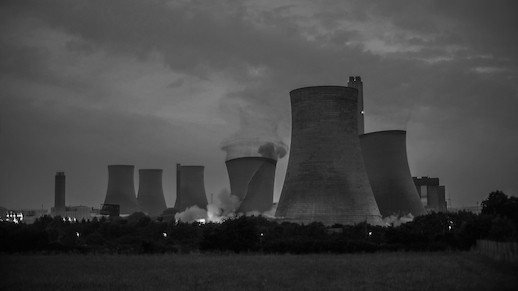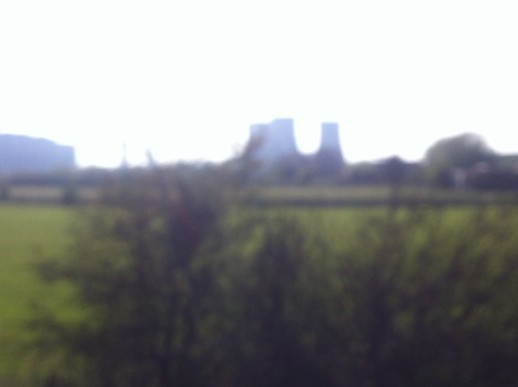Words and pictures* by James Attlee
Originally posted on James’s blog on April 27, 2015. Republished with permission.
Once we have made the same journey 100 times are we truly able to see anything along our route anymore? We have evolved to discount the familiar through the process known as habituation, in order to remain alert to new elements in our surroundings, whether they present themselves as threat or opportunity, predator or prey. Then one day an object in the landscape you have passed many times grabs your attention…
You are sucked into the vortex of its energy. A connection is made. Never again will you be able to move through this territory without raising your eyes from the screen or page.
For 3 years I photograph the cooling towers of Didcot power station obsessively from the train, fascinated by their geometric shapes blurred by speed.
In winter, as the days grow shorter, I encounter my totem at sunrise and sunset.
Just once I am passing precisely as the sun catches the side of the turbine hall: an epiphany of sorts.
Of course I know the smoke-breathing monster has to go: that doesn’t stop it being beautiful…
When the news comes of the demolition date for the three towers nearest the town of Didcot, I tour the site on the last day any members of the public are admitted and get close to the towers for the first time, exploring the strange spaces beneath them where water taken from the Thames to cool the turbine cascades downward, cooled in its turn by the up-draught of air, escaping as great clouds of steam, visible for miles around.
For me, as for countless others, the power station is a stamp on the landscape, a psychological landmark, its visual imprint embedded in my brain by my constant journeying to and fro. I have accumulated over 1,000 images of it on my laptop: flicking through them it feels as if I am replaying a few moments from my life again and again.
I join the all-night vigil leading up to the demolition of three of the towers at dawn; my companion, a photographer and film-maker, captures the last enigmatic smoke ring emitted by one of them as it falls.
Three towers are down, three remain, as well as the now-silent Turbine Hall, an abandoned cathedral alongside the bird-haunted mound of the landfill site: still a waymark then on the line between London and Bristol, but a monument now to shifting priorities in a changing world. The smaller, gas-powered Didcot B station is still operative.
It is already hard to believe that in the 21st century a vast site here, employing 500 people, burnt sulphur-emitting coal and sent plumes of water vapour hundreds of feet into the air.
Shooting into the sun, the three remaining Didcot A cooling towers melt together, a dead technology’s broken teeth.
Station to Station by James Atlee is published by Guardian Books and out now.
